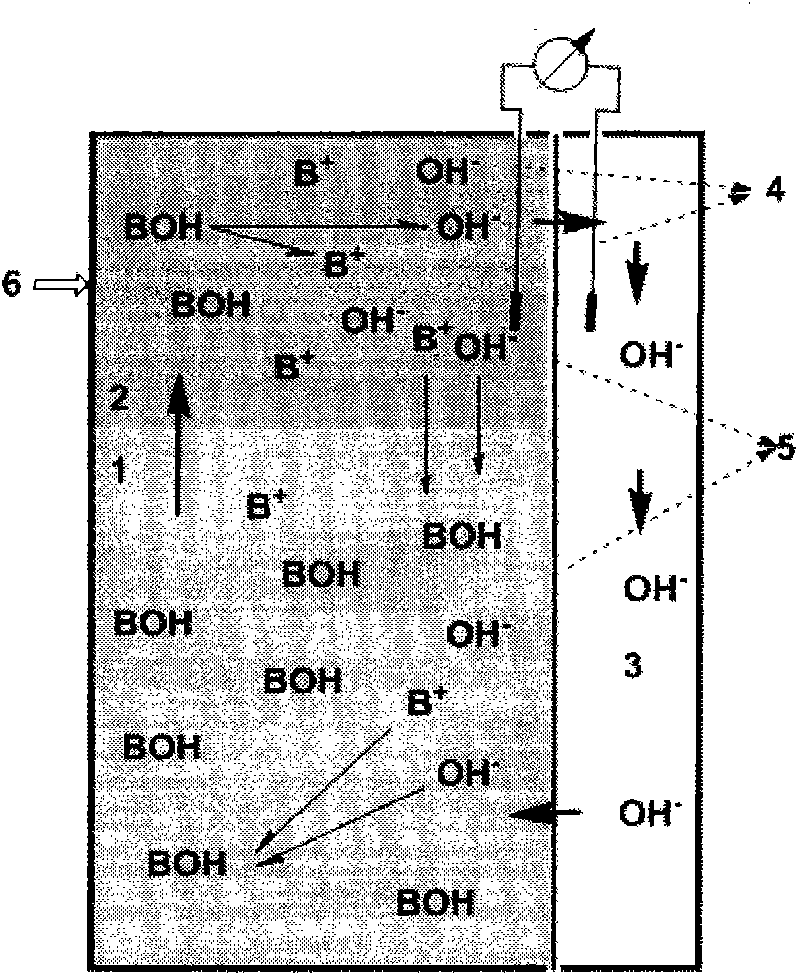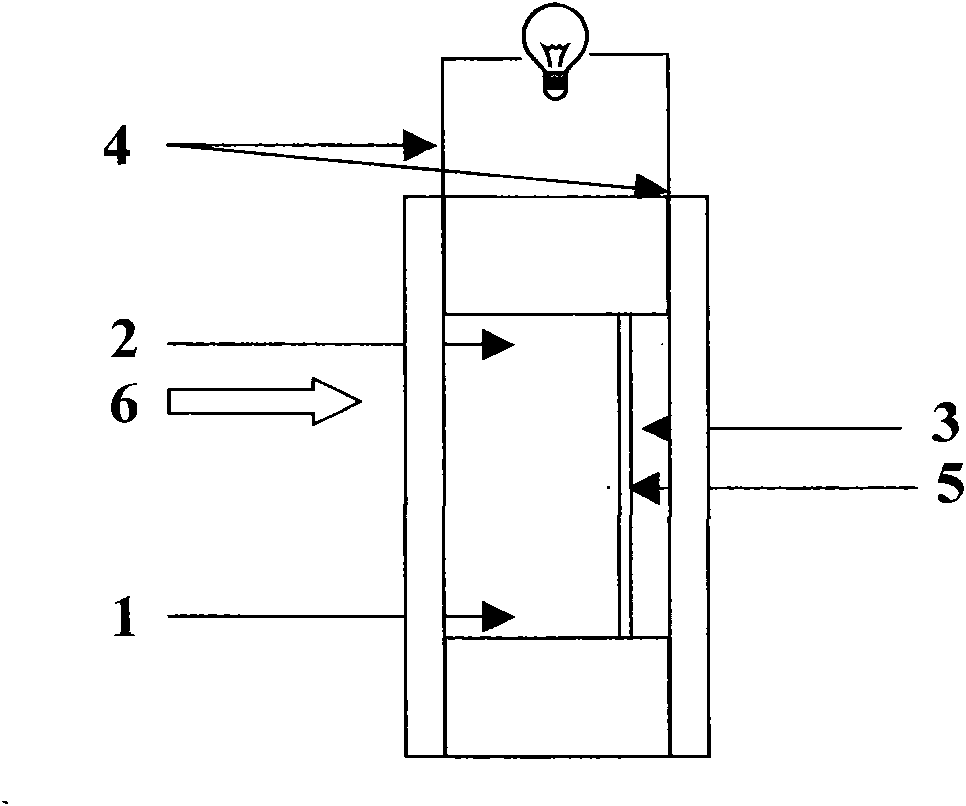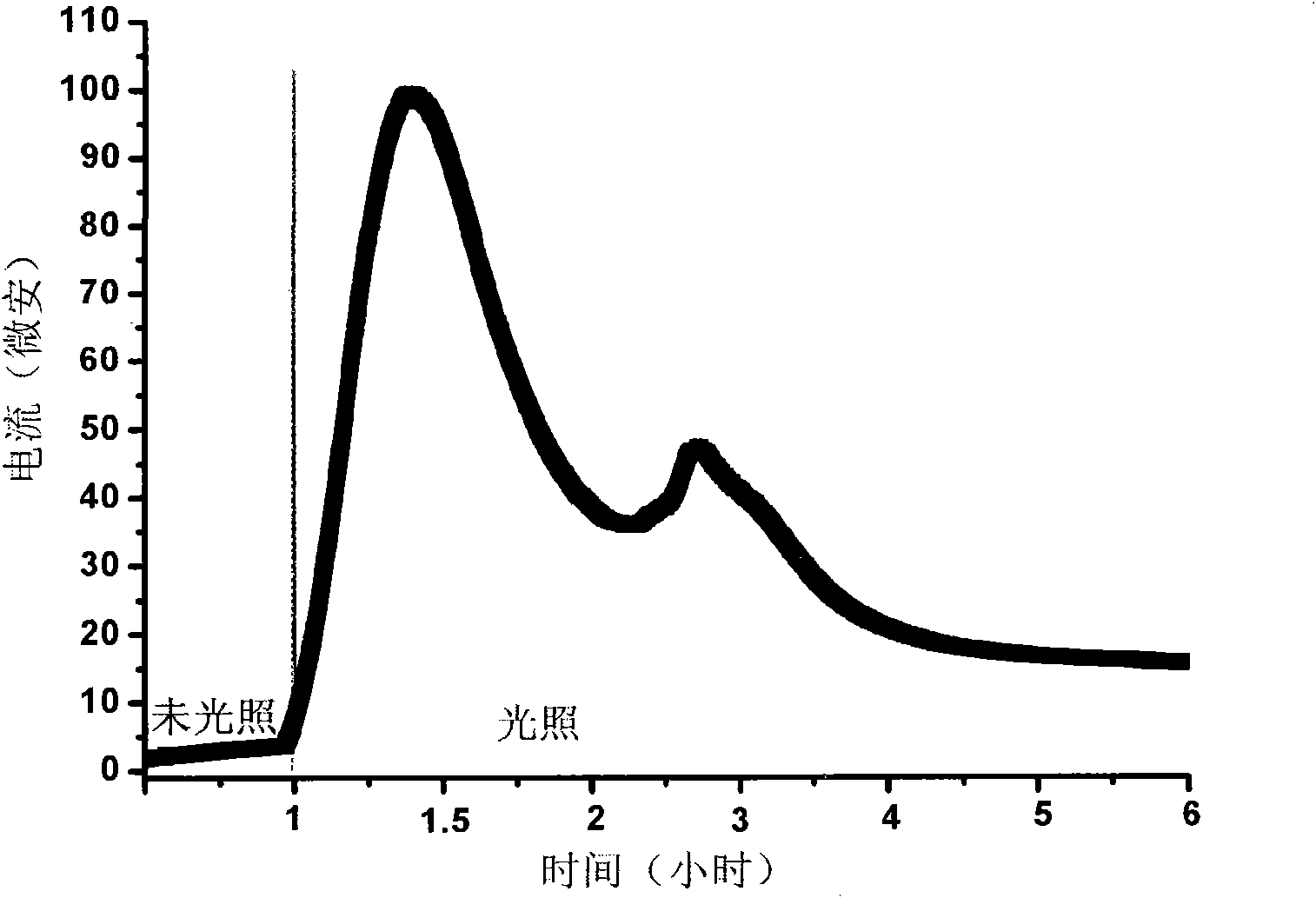Photo-induced hydroxyl ionized solar battery
A technology of solar cells and hydroxide radicals, applied in the direction of delayed action cells, etc., can solve the problems of non-renewable primary energy, shortage of non-renewable primary energy, and low efficiency of primary energy use
- Summary
- Abstract
- Description
- Claims
- Application Information
AI Technical Summary
Problems solved by technology
Method used
Image
Examples
Embodiment 1
[0048] See figure 1 and figure 2 . The light-induced hydroxide ionization solar cell includes a closed container as a photoelectrochemical cell, which only allows the hydroxide ions that can be generated by the photo-induced induction of photo-alkali molecules in water to pass through, and does not allow the photo-alkali molecules themselves and the photo-alkali molecules in the light. The cations generated after irradiation pass through as an anion exchange membrane 5 containing -N + (CH 3 ) 3 Oh - The polyethylene anion exchange membrane of strong basic group, the triarylamine photobase molecule of the aforementioned formula 1 structure that can produce hydroxide ion through light induction in water (this photobase molecule is in figure 1 Expressed by BOH, the cation produced after the decomposition of BOH is represented by B + Indicates) and the platinum electrode 4.
[0049] The said containing-N + (CH 3 ) 3 Oh - The polyethylene anion exchange membrane of stro...
Embodiment 2
[0057] Change the volume ratio of the first container and the second container to be 1 / 10, make the concentration of potassium chloride in the first container and the second container be made into 6M simultaneously, other conditions are with embodiment 1.
[0058] See figure 1 and figure 2 . The light-induced hydroxide ionization solar cell includes a closed container as a photoelectrochemical cell, which only allows the hydroxide ions that can be generated by the photo-induced induction of photo-alkali molecules in water to pass through, and does not allow the photo-alkali molecules themselves and the photo-alkali molecules in the light. The cations generated after irradiation pass through as an anion exchange membrane 5 containing -N + (CH 3 ) 3 Oh - The polyethylene anion exchange membrane of strong basic group, the triarylamine photobase molecule of the aforementioned formula 1 structure that can produce hydroxide ion through light induction in water (this photobase ...
Embodiment 3
[0065] The volume ratio of the first container to the second container is 1 / 2, and the translucent area of the side wall is changed so that the part area capable of light transmission accounts for 1 / 10 of the total area of the side wall, while the first container and the second container 0.1M cetyltrimethylammonium bromide is changed to 0.2M dodecyltrimethylammonium chloride, and the concentration of the triarylamine photobase molecule of the aforementioned formula 1 structure in the first container is reduced to 1 μ M simultaneously, Other conditions are with embodiment 1.
[0066] See figure 1 and figure 2 . The light-induced hydroxide ionization solar cell includes a closed container as a photoelectrochemical cell, which only allows the hydroxide ions that can be generated by the photo-induced induction of photo-alkali molecules in water to pass through, and does not allow the photo-alkali molecules themselves and the photo-alkali molecules in the light. The cations...
PUM
 Login to View More
Login to View More Abstract
Description
Claims
Application Information
 Login to View More
Login to View More - R&D
- Intellectual Property
- Life Sciences
- Materials
- Tech Scout
- Unparalleled Data Quality
- Higher Quality Content
- 60% Fewer Hallucinations
Browse by: Latest US Patents, China's latest patents, Technical Efficacy Thesaurus, Application Domain, Technology Topic, Popular Technical Reports.
© 2025 PatSnap. All rights reserved.Legal|Privacy policy|Modern Slavery Act Transparency Statement|Sitemap|About US| Contact US: help@patsnap.com



